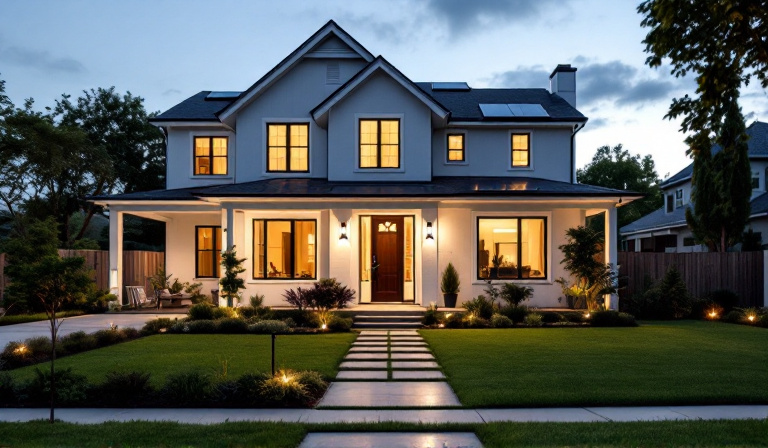
Creating a secure home is an endeavor that involves attention to detail, understanding potential threats, and implementing effective solutions. The journey from basic safety measures to a comprehensive security system can be both rewarding and essential for peace of mind. Whether you are a new homeowner or looking to upgrade your current security setup, this guide will walk you through the essential steps of building a secure home.
Understanding the Basics
The foundation of any secure home starts with understanding the basics of home security. This involves assessing your current situation, identifying vulnerabilities, and setting clear goals for your security needs.
Begin by conducting a thorough assessment of your home's exterior. Look for potential entry points such as doors, windows, and garage entrances. Consider the visibility of these areas from the street and whether they are well-lit at night. A basic yet crucial step is ensuring all entry points have sturdy locks and that these locks are used consistently.
Layered Security Approach
Effective home security relies on a layered approach. Each layer is designed to deter, detect, and delay potential intruders.
- Deterrence: The goal here is to make your home less attractive to burglars. Visible security measures such as alarm system signs, security cameras, and outdoor lighting can significantly deter criminal activity.
- Detection: Early detection of unauthorized entry is crucial. Consider installing motion detectors and surveillance cameras to monitor and record activity around your home.
- Delay: The longer it takes an intruder to gain access, the more likely they are to abandon their attempt. Reinforced doors, window bars, and security screens can add valuable time.
The Role of Technology
Modern technology has revolutionized home security, making it more accessible and effective than ever before. Here are some tech-based solutions worth considering:
- Smart Locks: These allow you to lock and unlock your doors remotely using a smartphone app, providing convenience and enhanced security.
- Security Systems: A comprehensive security system often includes alarms, cameras, and sensors that work together to protect your home.
- Video Doorbells: These devices allow you to see and communicate with anyone at your door, even when you're not home.
- Home Automation: Integrate your security system with smart home devices to control lights, thermostats, and other appliances remotely, giving the appearance of occupancy.
Physical Security Enhancements
While technology plays a significant role, physical enhancements should not be overlooked. Here are some practical improvements to consider:
- Reinforced Doors and Windows: Use solid core or metal doors and high-quality locks. Consider adding a deadbolt and strike plate for extra security.
- Secure Fencing: A sturdy fence can serve as a physical barrier, making it more difficult for intruders to access your property.
- Landscaping: Trim shrubs and trees near entry points to eliminate hiding places and improve visibility.
- Lighting: Install motion-activated lights around the perimeter of your home to deter nighttime intruders.
Community and Neighborhood Involvement
Security is often stronger when it involves the community. Building relationships with neighbors can enhance safety and create a network of support.
Consider participating in or starting a neighborhood watch program. These initiatives encourage vigilance and foster a sense of community responsibility. Sharing information about suspicious activity and working together can deter criminal acts.
Regular Maintenance and Updates
Once your security measures are in place, regular maintenance and updates are essential to ensure their effectiveness. Check batteries in alarms and cameras, test your systems periodically, and stay informed about new security technologies and threats.
Make it a habit to review your security strategy annually. As your family grows or circumstances change, your security needs may evolve.
Psychological Preparedness
Beyond physical measures, being mentally prepared is an integral part of home security. Educate your family about emergency protocols, such as what to do if an alarm sounds or if someone suspicious approaches the home. Practice makes perfect, so consider conducting regular drills to keep everyone sharp.
Balancing Security and Comfort
Finally, it's crucial to strike a balance between security and comfort. Over-securing your home can make it feel fortress-like, which may not be conducive to a relaxed living environment. Aim for security measures that integrate seamlessly into your lifestyle, providing peace of mind without sacrificing comfort.
By taking a comprehensive and thoughtful approach, you can transform your home from a basic living space into a secure haven. The peace of mind that comes from knowing your home is well-protected is invaluable, allowing you to focus on what truly matters: enjoying your time with family and friends.

